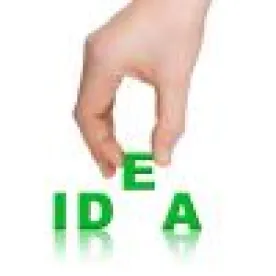On July 11, 2016, the United States Court of Appeals for the Federal Circuit issued an en banc decision that could affect patent owners’ ability to prepare for commercialization of a patented invention more than one year prior to the filing date of a patent. In The Medicines Co. v. Hospira, Inc., Nos. 2014-1469, 2014-1504, slip op. (Fed. Cir. July 11, 2016), the Federal Circuit reversed its merits panel’s decision invalidating the asserted claims of The Medicines Co.’s patents based on certain pre-critical date supplier-inventor transactions and clarified the law regarding when an invention has been the subject of a commercial sale or offer for sale for purposes of 35 U.S.C. § 102(b).
Prior to the America Invents Act, section 102(b) provided that “[a] person shall be entitled to a patent unless,” inter alia, “the invention was . . . on sale in this country, more than one year prior to the date of the application for patent in the United States.” 35 U.S.C. § 102(b) (2010). Supreme Court precedent holds that this on-sale bar applies when, before the critical date, the claimed invention (1) is the subject of a commercial offer for sale; and (2) is ready for patenting. Pfaff v. Wells Electronics, Inc., 525 U.S. 55, 67-68 (1998). The Federal Circuit has applied this standard to invalidate patent claims in a number of cases involving pre-critical date supplier-inventor transactions, reasoning that they involved commercial sales. See Brasseler, U.S.A. I, L.P. v. Stryker Sales Corp., 182 F.3d 888, 890-91 (Fed. Cir. 1999); Special Devices, Inc. v. OEA, Inc., 270 F.3d 1353 (Fed. Cir. 2001); Hamilton Beach Brands, Inc. v. Sunbeam Products, Inc., 726 F.3d 1370, 1375 (Fed. Cir. 2013).
On appeal, Hospira argued that those decisions were controlling and the pre-critical date transactions between The Medicines Co. and its supplier triggered the on-sale bar, but the en banc panel disagreed. First, the panel clarified that “the mere sale of manufacturing services by a contract manufacturer to an inventor to create embodiments of a patented product for the inventor does not constitute a ‘commercial sale’ of the invention.” Hospira, Nos. 2014-1469, 2014-1504, slip op. at 19. Second, it addressed the issue of “stockpiling” commercial inventory and clarified that “‘stockpiling’ by the purchaser of manufacturing services is not improper commercialization under § 102(b).” Id. The panel explained “that commercial benefit—even to both parties in a transaction—is not enough to trigger the on-sale bar of § 102(b); the transaction must be one in which the product is ‘on sale’ in the sense that it is ‘commercially marketed.’” Id.
The en banc panel then turned to the facts of the case and found that the supplier-inventor transactions at issue did not rise to the level of a commercial sale, reasoning that: “(1) only manufacturing services were sold to the inventor—the invention was not; (2) the inventor maintained control of the invention, as shown by the retention of title to the embodiments and the absence of any authorization to [the supplier] to sell the product to others; and (3) ‘stockpiling,’ standing alone, does not trigger the on-sale bar.” Id. The panel also distinguished the Federal Circuit’s past cases involving supplier-inventor transactions as cases involving commercial sales and overruled them to the extent they might be interpreted inconsistently with its decision. Id. at 29-31.
Nevertheless, the en banc panel did emphasize “one important caveat”:
We still do not recognize a blanket “supplier exception” to what would otherwise constitute a commercial sale as we have characterized it today. While the fact that a transaction is between a supplier and inventor is an important indicator that the transaction is not a commercial sale, understood as such in the commercial marketplace, it is not alone determinative. Where the supplier has title to the patented product or process, the supplier receives blanket authority to market the product or disclose the process for manufacturing the product to others, or the transaction is a sale of product at full market value, even a transfer of product to the inventor may constitute a commercial sale under § 102(b). The focus must be on the commercial character of the transaction, not solely on the identity of the participants.
Id. at 31.
When working with suppliers during product development and early stages of commercialization of a potentially patentable invention, the Hospira decision needs to be taken into consideration to ensure the on-sale bar is not triggered, or that a patent application is filed within one year if it is triggered.






 />i
/>i

